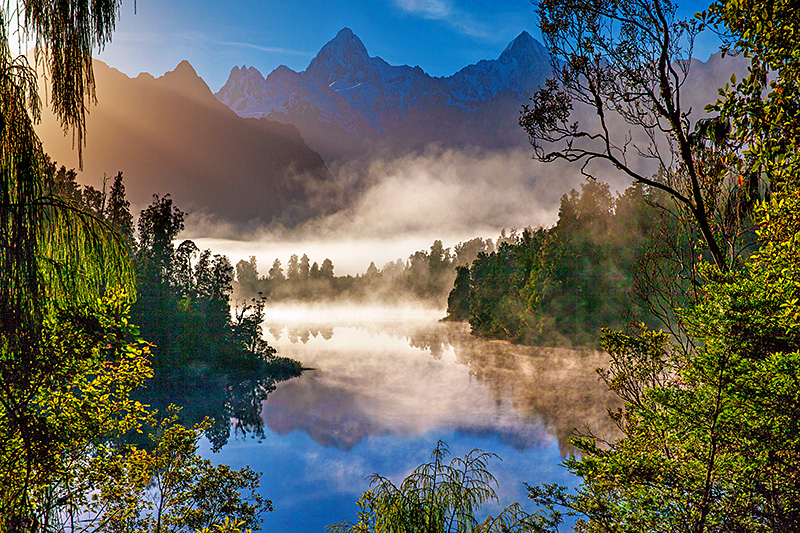Efforts to safeguard New Zealand’s native plants and wildlife are spelled out in a newly-launched government plan, including easing tourism impacts and more coordination and community-led activities.
The Conservation Minister says 4000 species face threats such as pests, land use, and climate change. The action plan fleshes out the 2020 biodiversity strategy – Te Mana o te Taiao – seeking to spark nationwide action to reverse the country’s biodiversity crisis over the next 30 years.
The SMC asked experts to comment on the plan.
Dr Andrea Byrom, Environmental Consultant, comments:
“It’s great to see this implementation plan for Te Mana o Te Taiao come out, almost two years after the release of the strategy. Essentially this initial implementation plan is a summary of what regional and national government agencies are currently doing, or will do in the immediate future, in terms of actions to address Aotearoa’s biodiversity crisis. The amount of work that must have gone into collating this collective response, and the negotiations and agreements that will have taken place across agencies behind the scenes, is to be commended. This is the first time I have ever seen such a comprehensive summary of the many strands of work across government to halt biodiversity loss, and it is a significant step in the right direction.
“While the plan lists a number of ‘actions’, it is still short on detail as to exactly how the actions will be funded and how the communities doing the work ‘on the ground’ will be supported to continue that work – and who will have the oversight role in ensuring that the agencies do what they say they will do, and hold them to account if they don’t deliver.
“And while this plan (and the original strategy) acknowledges the role of tangata whenua as kaitiaki and rangatira, and the importance of Mātauranga Māori in building the evidence base from which to take action, these words have significant meaning in Māoridom and there is little actual detail on what steps will be taken to work more meaningfully across government to give effect to Te Tiriti o Waitangi in this plan. I think that is an oversight that needs to be addressed urgently.
“Overall this is a great start, but our biodiversity and climate crises are upon us and we now need to work with urgency to ensure the plan has teeth – both now and in the future.”
Conflict of interest statement: Andrea was appointed to the Ministerial Advisory Group (Science) in 2018 during the development phase of the Te Mana o Te Taiao strategy, and was briefly involved in the early stages of development of the Interim Oversight Group mentioned in the plan. She was not involved in the detailed development of the implementation plan”.
Dr Duane Peltzer, Chief Scientist of BioHeritage National Science Challenge and Principal Scientist, Ecosystem Ecology, Manaaki Whenua – Landcare Research, comments:
“From the perspective of the BioHeritage National Science Challenge Ngā Koiora Tuku Iho, we strongly support strong implementation of the outcomes outlined in Te Mana o te Taiao, and this plan is an important step toward improving our collective approach to improving management of Aotearoa New Zealand’s biodiversity and taonga species.
“The emphasis throughout this implementation plan on greater coordination and a collective approach to biodiversity management mirrors the BioHeritage Challenge’s approach to our mission, which is to reverse the decline in our biological heritage by taking a collaborative, multi-disciplinary approach to achieve national-scale impacts and benefits.
“A major change in implementation and biodiversity management is also acknowledging that structural changes are required to governance and management, particularly to support te Tiriti partnerships throughout as support pillars or pou throughout the plan.
“The scale of the effort and range of activities outlined in the plan, and thought to be required for improving our biodiversity, is staggering. The number, scale and diversity of actions outlined is staggering, running to 13 objectives for 2050, 8 priority areas, and over 200 actions outlined. Some of these are to be achieved by 2025, but most are ongoing and longer-term efforts designed, spanning everything from legislative changes, to improved monitoring and reporting, through to adoption and use of specific programmes, tools or approaches on the ground.
“What Te Mana o te Taiao and its implementation plan represent is no less than a major pervasive shift in our national approach to management of biodiversity. How these changes can be supported over the longer-term to both reverse the decline in biodiversity, and achieve the multiple additional benefits outlined in these documents remains unclear. However, the move toward greater coordination and recognition of both government and community contributions to biodiversity management is a critical first step.”
No conflict of interest. “I work for both the BioHeritage Challenge and Manaaki Whenua on research programmes closely aligned to Te Mana o te Taiao, but have not directly been involved with development of these documents and declare no conflict of interest.”
